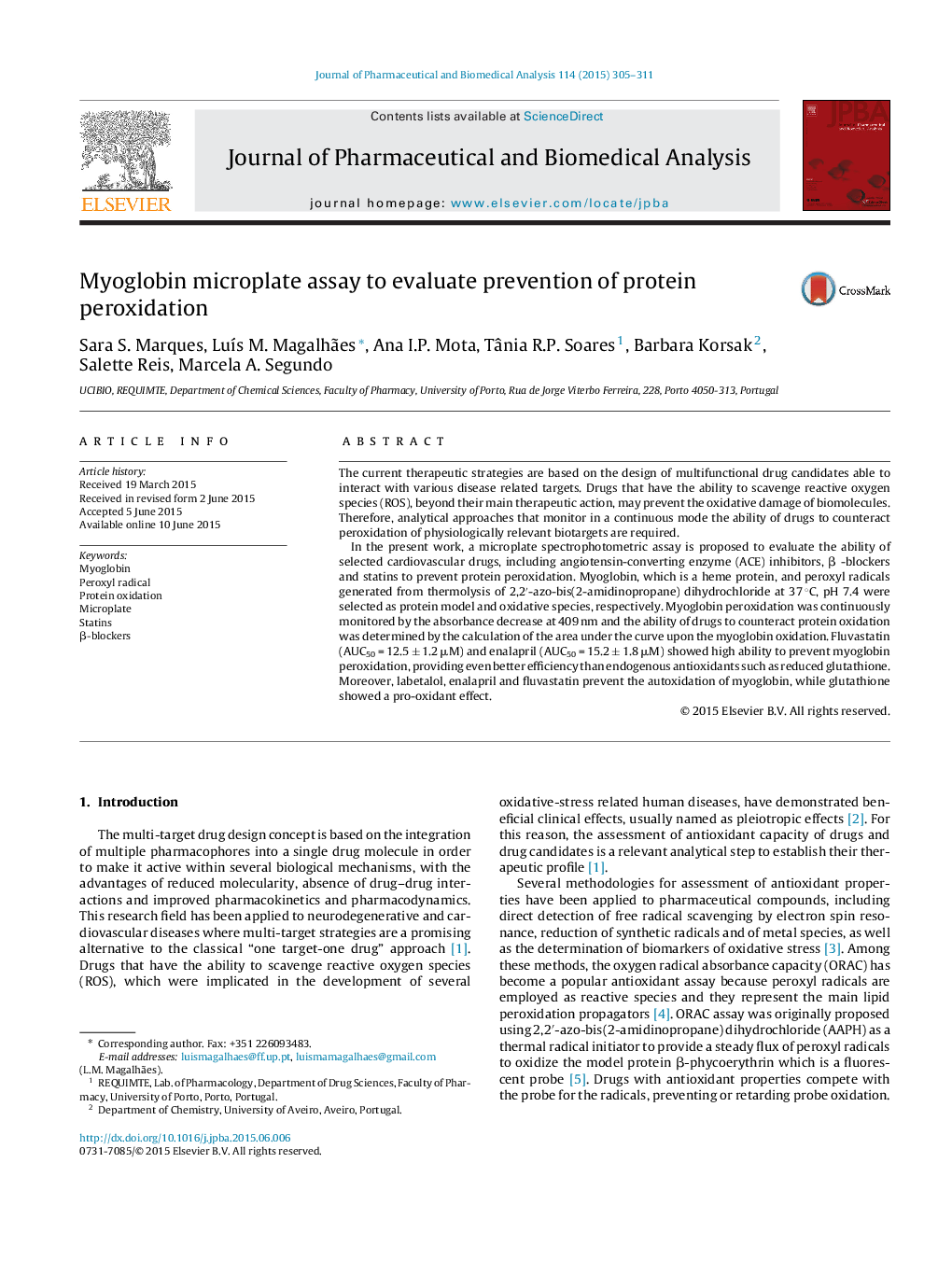| Article ID | Journal | Published Year | Pages | File Type |
|---|---|---|---|---|
| 1220852 | Journal of Pharmaceutical and Biomedical Analysis | 2015 | 7 Pages |
•Prevention of protein peroxidation is adapted to high throughput microplate format.•Myoglobin peroxidation is monitored in a continuous mode, providing kinetic info.•Angiotensin-converting enzyme (ACE) inhibitors, β -blockers and statins were tested.•Fluvastatin and enalapril showed high ability to prevent myoglobin peroxidation.•Glutathione showed a pro-oxidant effect toward autoxidation of myoglobin.
The current therapeutic strategies are based on the design of multifunctional drug candidates able to interact with various disease related targets. Drugs that have the ability to scavenge reactive oxygen species (ROS), beyond their main therapeutic action, may prevent the oxidative damage of biomolecules. Therefore, analytical approaches that monitor in a continuous mode the ability of drugs to counteract peroxidation of physiologically relevant biotargets are required.In the present work, a microplate spectrophotometric assay is proposed to evaluate the ability of selected cardiovascular drugs, including angiotensin-converting enzyme (ACE) inhibitors, β -blockers and statins to prevent protein peroxidation. Myoglobin, which is a heme protein, and peroxyl radicals generated from thermolysis of 2,2′-azo-bis(2-amidinopropane) dihydrochloride at 37 °C, pH 7.4 were selected as protein model and oxidative species, respectively. Myoglobin peroxidation was continuously monitored by the absorbance decrease at 409 nm and the ability of drugs to counteract protein oxidation was determined by the calculation of the area under the curve upon the myoglobin oxidation. Fluvastatin (AUC50 = 12.5 ± 1.2 μM) and enalapril (AUC50 = 15.2 ± 1.8 μM) showed high ability to prevent myoglobin peroxidation, providing even better efficiency than endogenous antioxidants such as reduced glutathione. Moreover, labetalol, enalapril and fluvastatin prevent the autoxidation of myoglobin, while glutathione showed a pro-oxidant effect.
Graphical abstractFigure optionsDownload full-size imageDownload as PowerPoint slide
